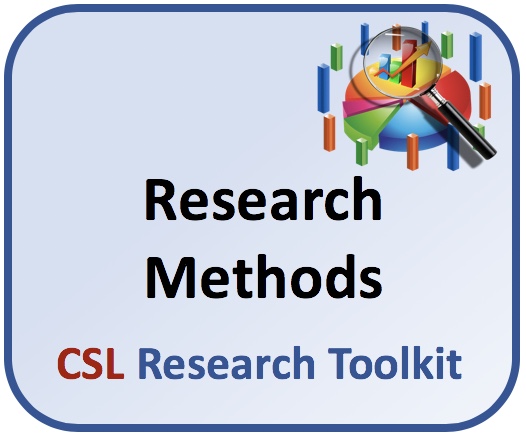
There are many ways to gather and assess data for your research: one is not better than the other. Choosing the best method for your research purpose is the key to success.
In this section of the CSL Research Toolkit we look at different types of data and different methods for gathering that data. Your research may use one method or a combination of methods. It is very important to start with understanding the difference between quantitative research and qualitative research, and when each can support your research purpose.
Quantitative Research
Quantitative research uses numerical data or data that can be transformed into statistical information to explore a research question. Quantitative data is particularly useful for formulating facts and uncovering patterns to support research conclusions.
There are many sources for quantitative data in education, including student assessment data. The Integrated Library System (ILS) used to manage cataloguing and item and borrower records provides a rich source of quantitative data. Most of these systems include the ability to access reports on a wide range of data about item use and borrower habits. Similarly, the “back end” of online subscription databases provide very detailed information about the use of these resources. Typically the ILS and databases are managed by the school district’s library support services.
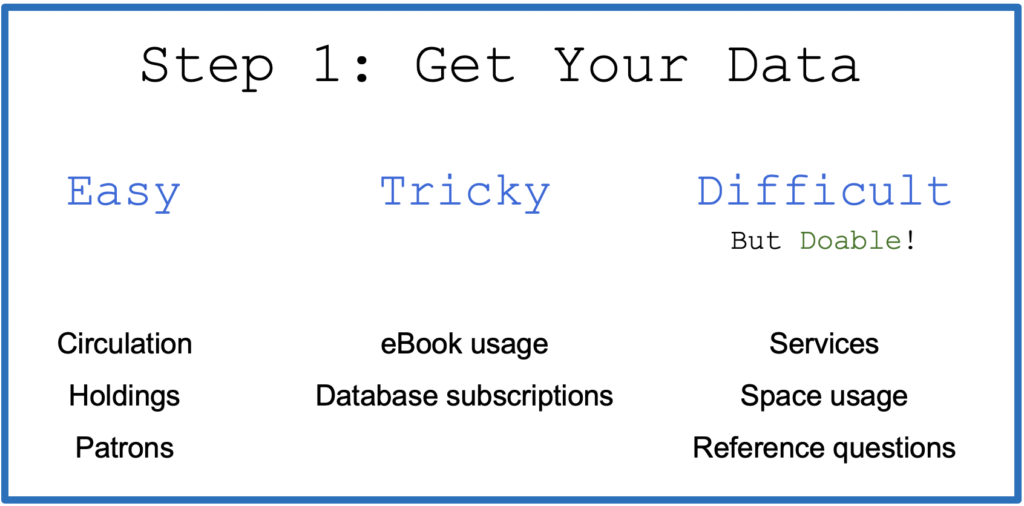
Quantitative data about spaces and services is valuable for gaining insight, but they are also often the most difficult to count. Keeping track of instruction sessions, book talks, space usage and the like could be a full-time job in and of itself.
The key here is to have a place to record simple service counting stats such as number of bookings and attendees or length of sessions. Over time, your data store will grow and you will be able to apply some analysis to understand themes and trends in the data. Collecting and using this type of quantitative data may serve to provide deeper insight into the qualitative data assessment that you apply to these program areas.
Qualitative Research
Qualitative research encompasses approaches where data is collected through observation of behaviours or verbal interactions or reports. Qualitative research methodology applies rigour to how this data is collected, organized and analyzed. Qualitative research is used widely in the social sciences and in education. Qualitative data is gathered through interviews, focus groups, directed observation, and written documents.
Quantitative or Qualitative?
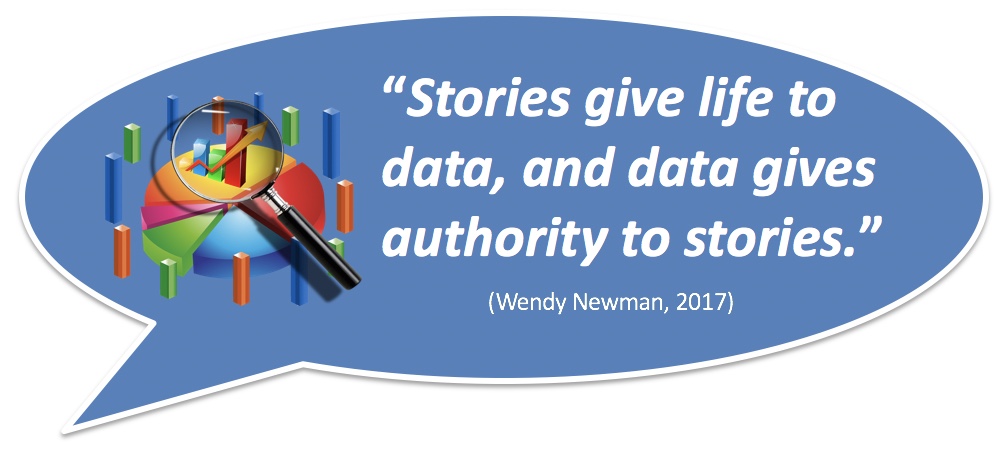
While quantitative data may seem more authoritative to some, qualitative research that is collected and analyzed with rigour has great validity. Qualitative research adds context and the power of story. As a researcher, you must decide what type of data you will collect. Some factors to consider as you make this decision are:
Time and Resources: Qualitative data gathering and analysis, powerful as it is, takes more time and resources to do properly. If your time and resources are limited, it might be best to stick to quantitative research.
Representative Sample or Depth and Detail: When you need to claim that your data is generally representative of what you are studying, use quantitative methods. Qualitative approaches will give more depth of understanding and detail to your research. Qualitative data deals with the complexities of a topic, and it gives participants a voice. For example, circulation statistics in your school library may provide insight into how many books and what types of books students in your school are reading. Talking to readers provides deeper insight into why students are reading or not reading. It might also help you as a researcher to understand the variables affecting reading habits and to generate associated theories. Combining research methods can be a particular powerful approach. In our example, the statistical circulation data reveals trends. Those trends inform decisions about who you need to talk to and what you need to ask through qualitative research in order to gain deeper insight into those trends.
Methods for Collecting Data
Surveys
Surveys are a widely-used method for collecting data. Surveys can be used to collect both quantitative and qualitative data. The design of a survey and methods of distribution, sample size and quality, data gathering and methods of analysis determine the validity of the survey for research purposes.
To conduct an effective survey:
- Know your population: Understand who you asking to complete your survey, and why their responses will contribute to your research.
- Determine how your survey will be distributed: Will you be creating an online survey? A paper survey? Will you be gathering information face-to-face? The mode of distribution influences the ease and accuracy with which you can summarize and analyze the data you gather.
- Create your questions: Survey questions can gather quantitative or qualitative data. Ask questions directly relevant to your research goal.
- Questions should be simple and clear. Questions can be interpreted in a consistent manner by all survey respondents.
- “Binary” questions – those that elicit simple “agree/disagree” answers – are generally not helpful and should be avoided.
- Ask questions that people will be willing to answer. Avoid asking personal questions. Assure people of the confidentiality of the survey. (See the toolkit’s Research Ethics page.)
- Ask questions that people will know how to answer.
- Avoid double-barrelled questions. A question that is really two questions confuses respondents: they may want to respond in different ways to each of the questions.
- Design questions so that people will answer truthfully. People may not answer truthfully if they understand that their response might reflect poorly on them. This is called the social desirability factor.
- Most importantly, do not contaminate your own research by asking biased questions. Avoid biased terms or wording. Be rigorous in ensuring that your questions are not leading – trying to prove a particular approach or point of view.
- Test your questions: This can be done in a number of ways. Most simply, having a small number of people try the survey out may reveal weaknesses in your design or in your questions. Best to fix these weaknesses before collecting data from your full sample.
- Get a good sample: Your survey may be beautifully designed, but if it is completed by the wrong people or by not enough people, the validity of your research may be compromised.
- Gather your data: Share your survey and monitor response rates. Take measures to ensure that you gather enough information to draw conclusions.
- Analyze your data: Your method will vary, depending on the data type. We’ve dedicated a whole page to this topic! Go to the toolkit’s Data Analysis page.
- Present your findings: Go to the toolkit’s Sharing and Learning page to dig into this topic.
To ensure that your survey is effective:
- Know exactly what your purpose is, and what you want from the data you collect
- Ask simple, clear questions
- Avoid questions with “yes/no” or “agree/disagree” answers
- Be sure you don’t ask biased or leading questions
Interviews
Interviews are particularly useful in gaining deeper insight into a research question. The two main types of interviews are the representative interview and the key informant interview.
Representative Interview: In this model, you interview a range of people who are representative of a specific population. For example, if you were studying the impact of an instructional method on a particular class, you might chose to do in-depth interviews with a few students in that class. These interviews add depth of understanding to other data that you have collected.
Key Informant Interview: Interviews can also be used to add a different perspective to your research. Key informants are people who may have subject expertise, be in a position of leadership, or who may be able to offer a broader perspective.
Focus Groups
A focus group is a focused discussion with a small group. Like an interview, the set of questions used in the group setting seeks to gain an in-depth understanding of your research question. Focus groups are useful for gaining insight into specific ideas or theories that you have already established through research. Focus group research is useful when combined with other research methods.
Careful consideration must be taken when organizing a focus group. Typically groups are restricted to a small number of participants so that everyone has a chance to participate. The event is usually facilitated by two people: one to lead the discussion and one to take notes. You may want to record the proceedings. Be sure that you have received informed consent for this. Refer to the Research Ethics page of this toolkit for more information on consent. The atmosphere of the discussion and the setting should be comfortable and non-threatening. Topics explored in focus group discussions should not be personal or controversial in nature, to avoid making participants feel uncomfortable, and also to make sure that the proceedings run smoothly.
Participants in focus group discussions are chosen because they share certain characteristics so that the researcher can identify trends and patterns in perception. The qualitative data that you gather from focus group discussions must be carefully recorded, organized and analyzed using established methods. See the Data Analysis page of this toolkit for more information.
Observations
Observation-based research is a widely used method in education. In other settings and research within other social sciences researchers may be observing people’s behaviours without identifying themselves. Within the school setting this is, of course, not possible. Most classroom educational observation therefore is done by researchers whose purpose is known. In the case of teacher action research in particular, the researchers are active members of the group, and must therefore strive to maintain a balance between objective observation and subjective participation. Arguably, teachers have some mastery of this technique, since it is typical of how teachers approach student assessment for reporting purposes. Observation-based research may be useful in assessing behaviour within an environment.
Case Studies
A case study provides an opportunity for a researcher to investigate a particular phenomenon within a real life context, using multiple sources of evidence (L. D. Ashley. Case Study Research. In Research Methods & Methodologies in Education. Sage: 2012). Case study research includes single case studies and multiple case studies where cases are related in some way. An example might be a case study of how a particular strategy is being implemented in a school library or in a group of school libraries. Case studies may include a number of methods for developing in-depth understanding. Using multiple methods for gathering information – triangulation of data – helps to develop deeper understanding while it also controls for anomalies that might occur should one method only be used.
Primary Research
Primary research is the original research that you do yourself. Hence your study is primary research.
Secondary Research
Secondary research involves looking at external sources – the other studies, reports and articles that you will investigate as part of the literature review stage of your own research.
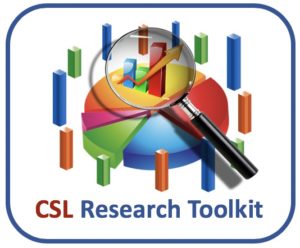 | 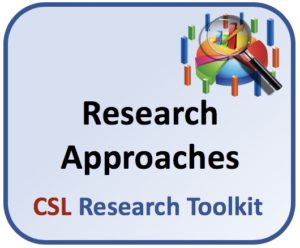 | 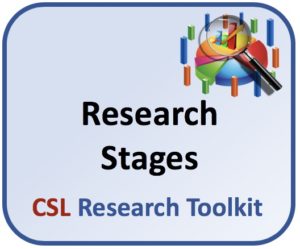 | 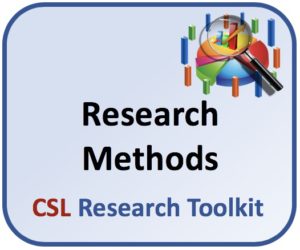 | 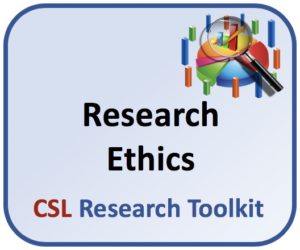 |
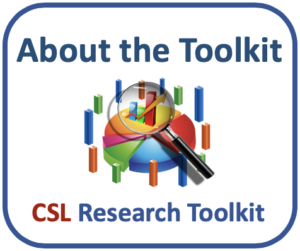 | 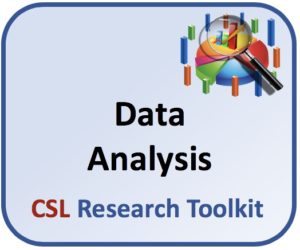 | 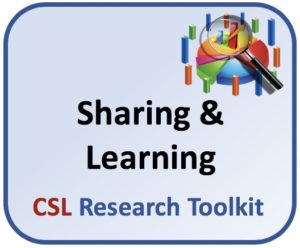 | 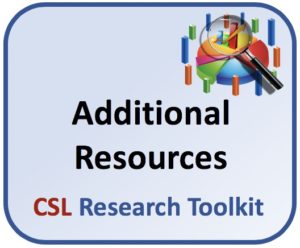 | 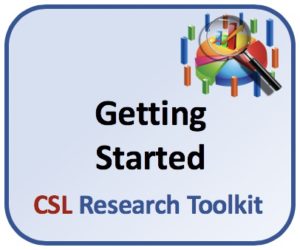 |
